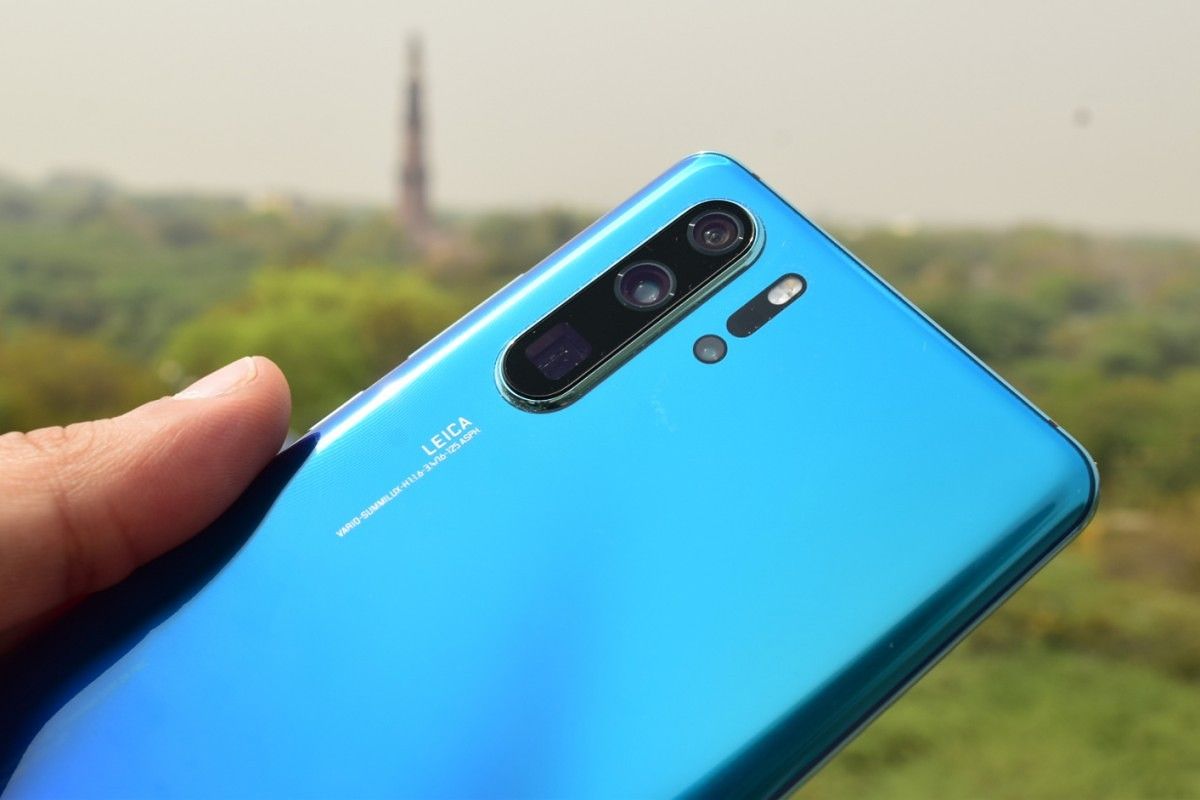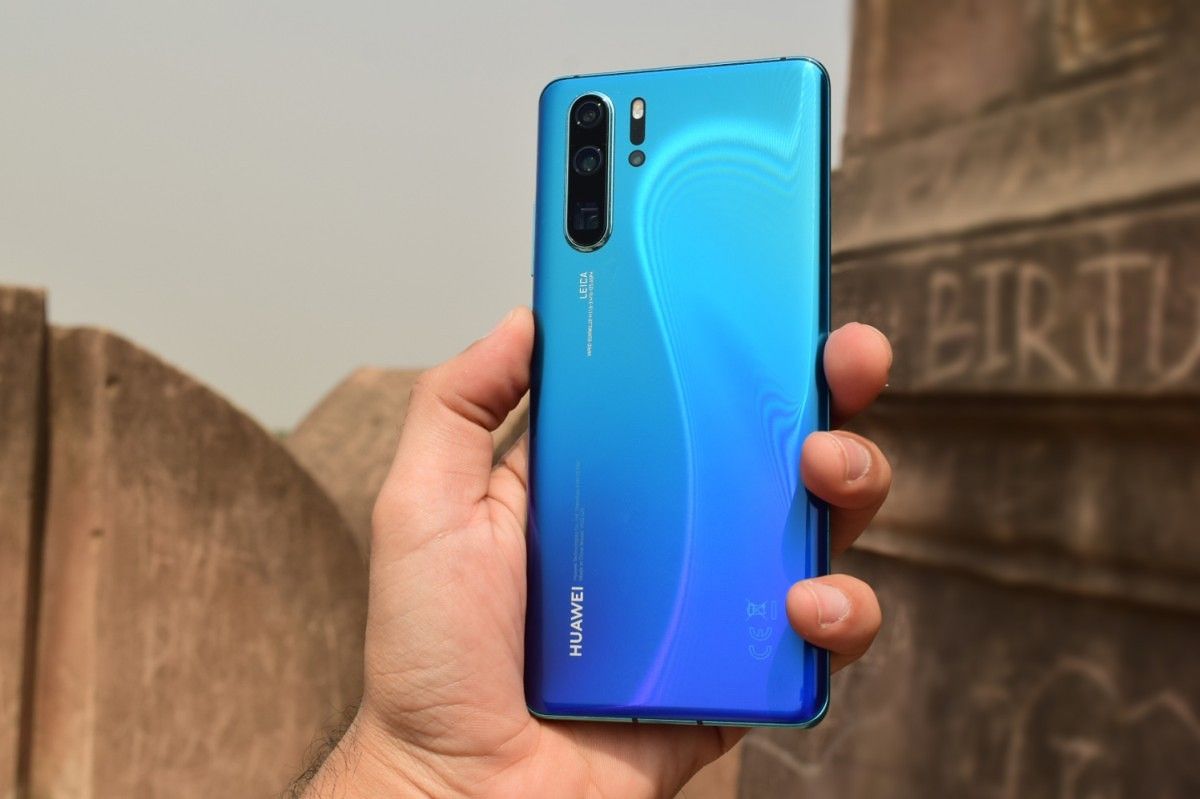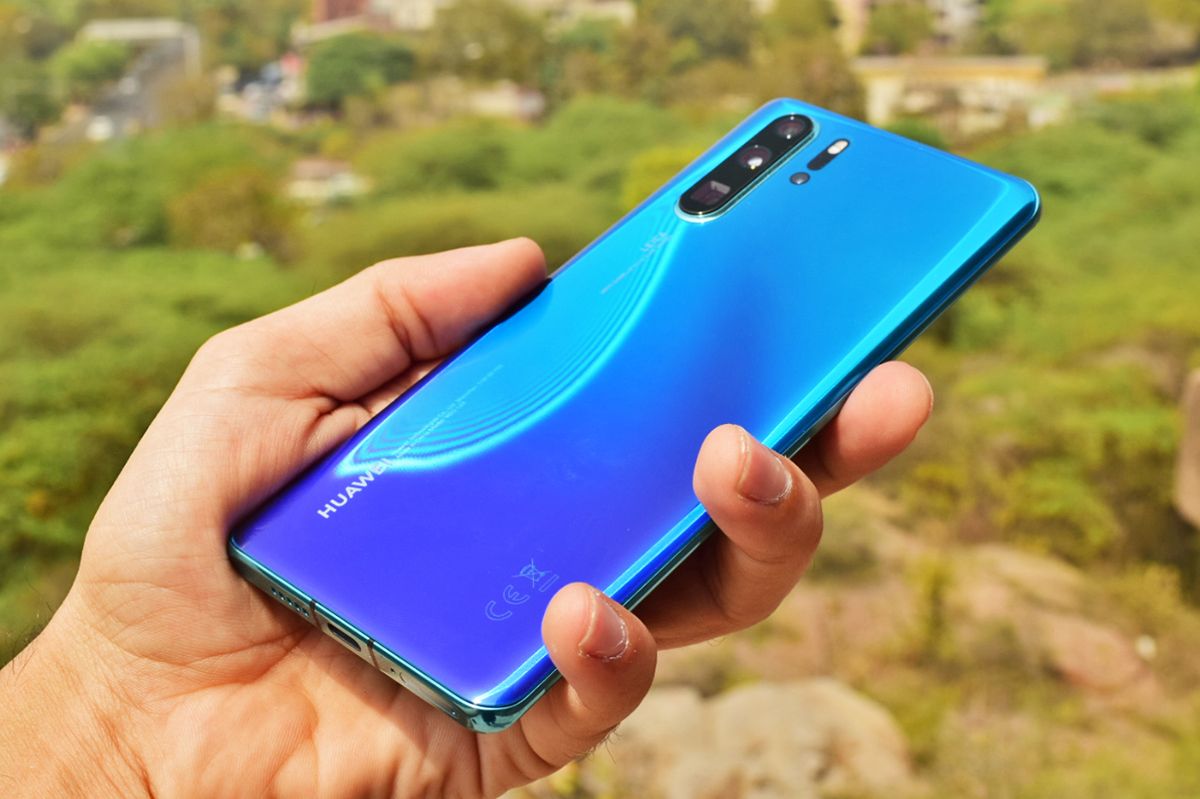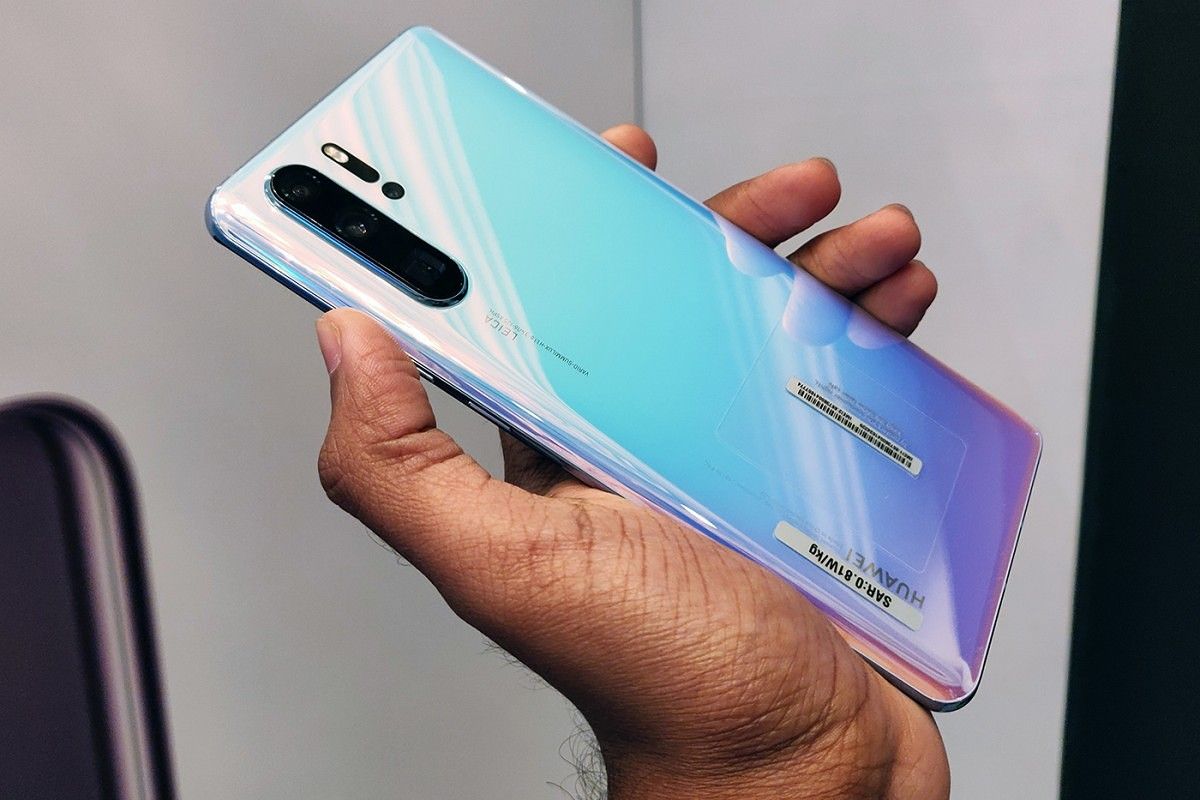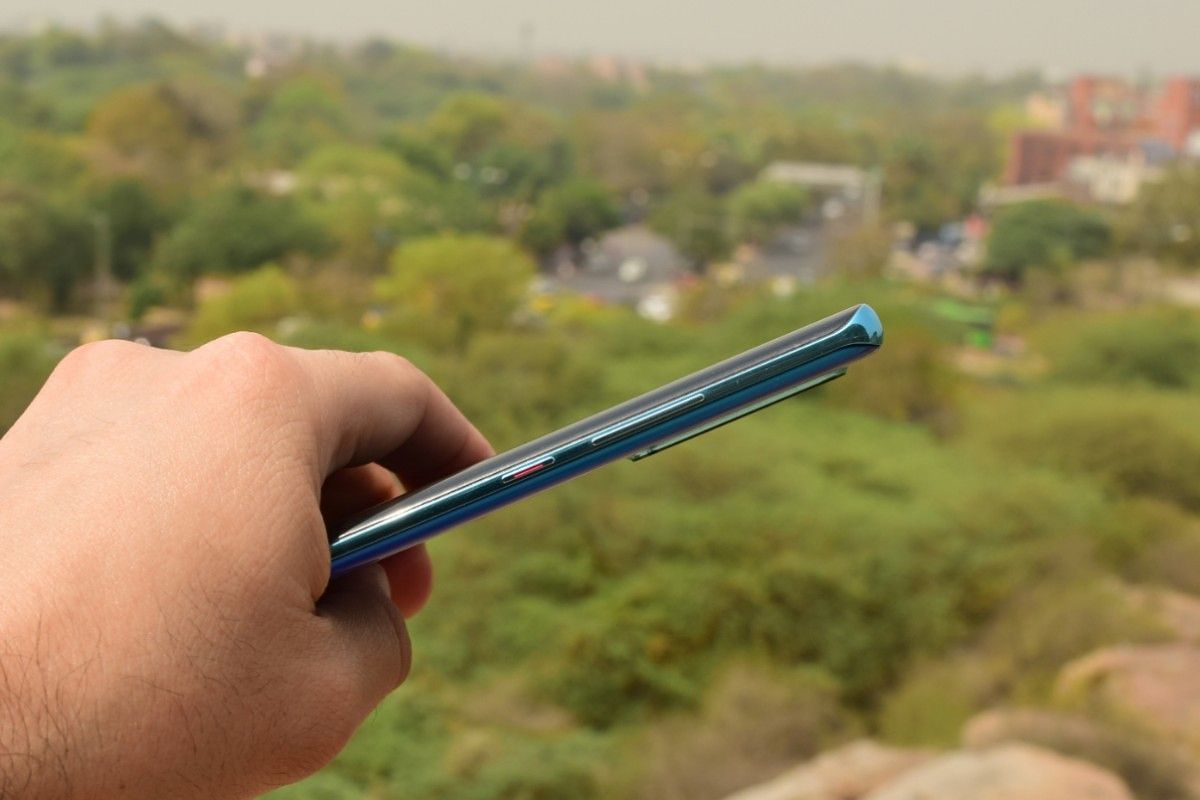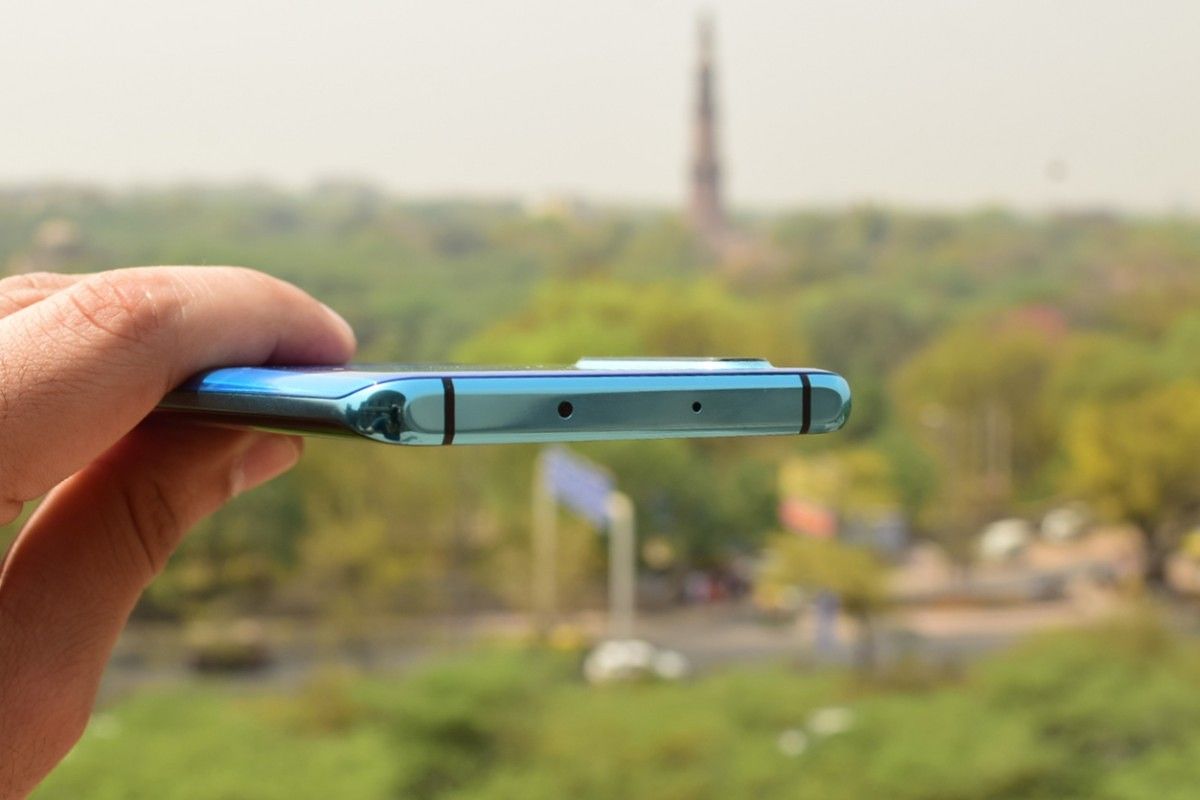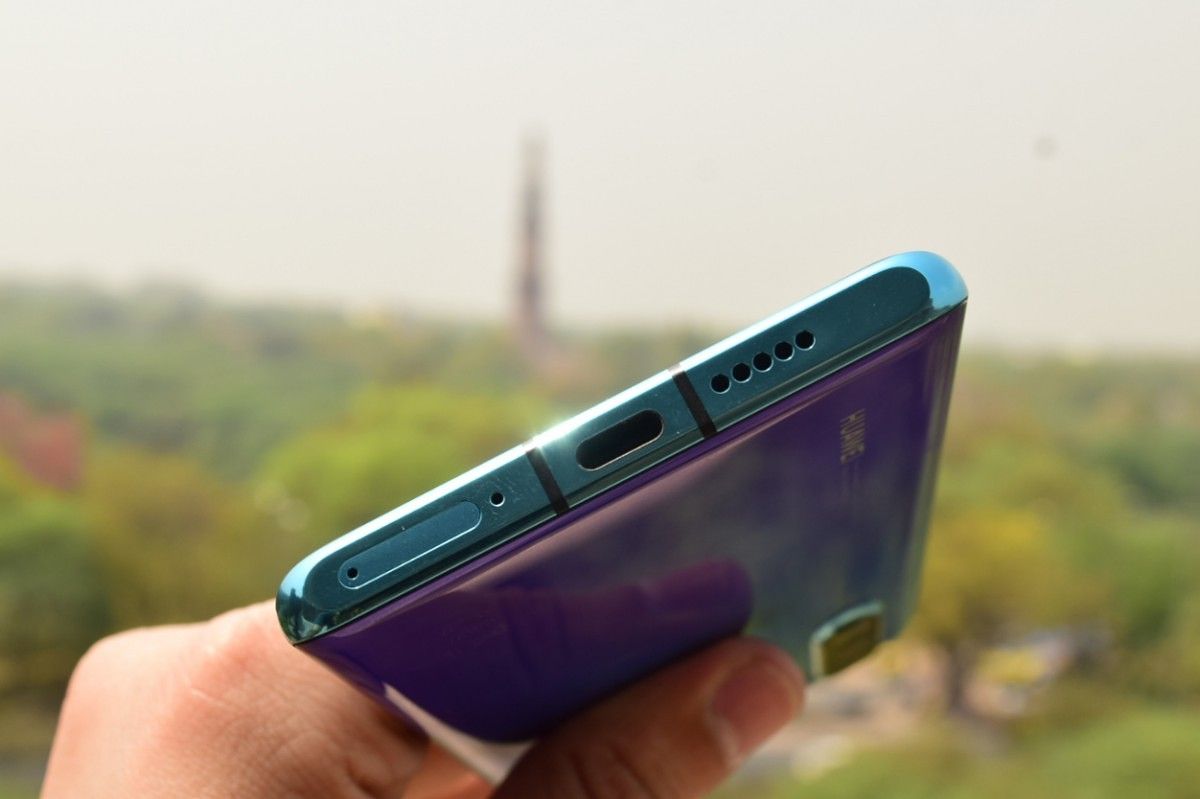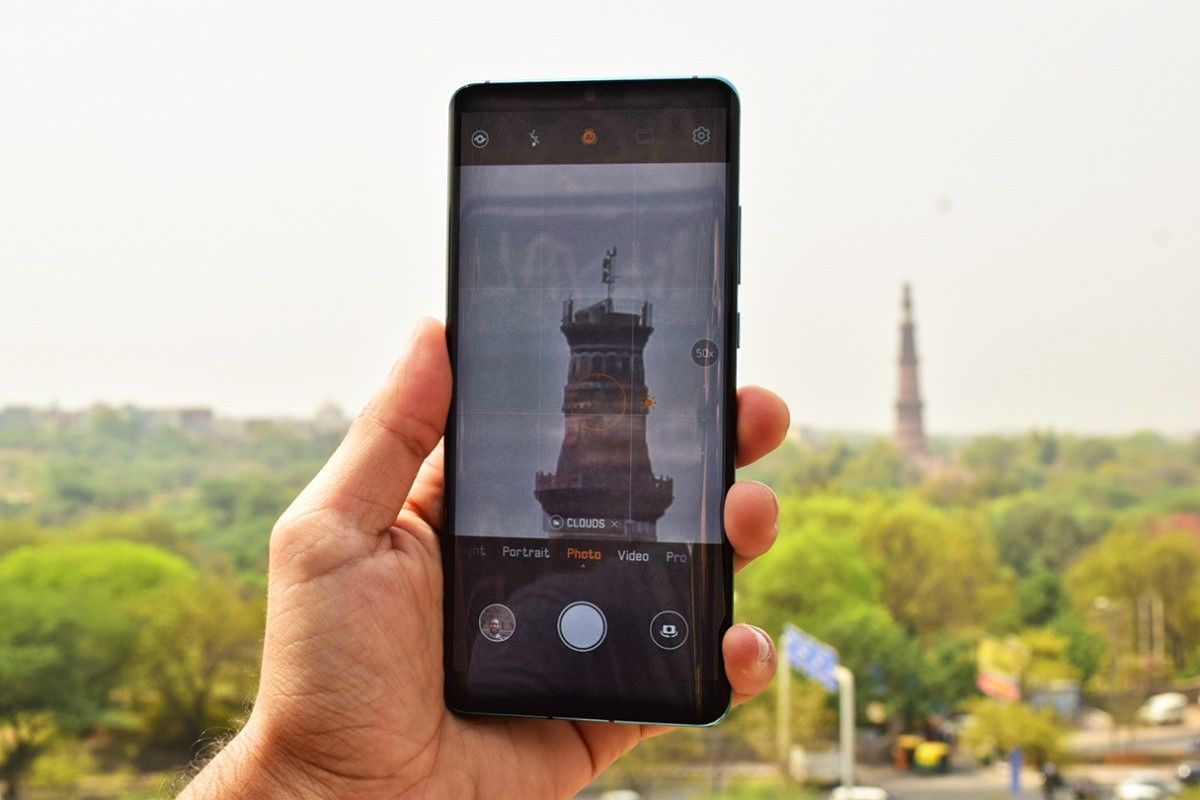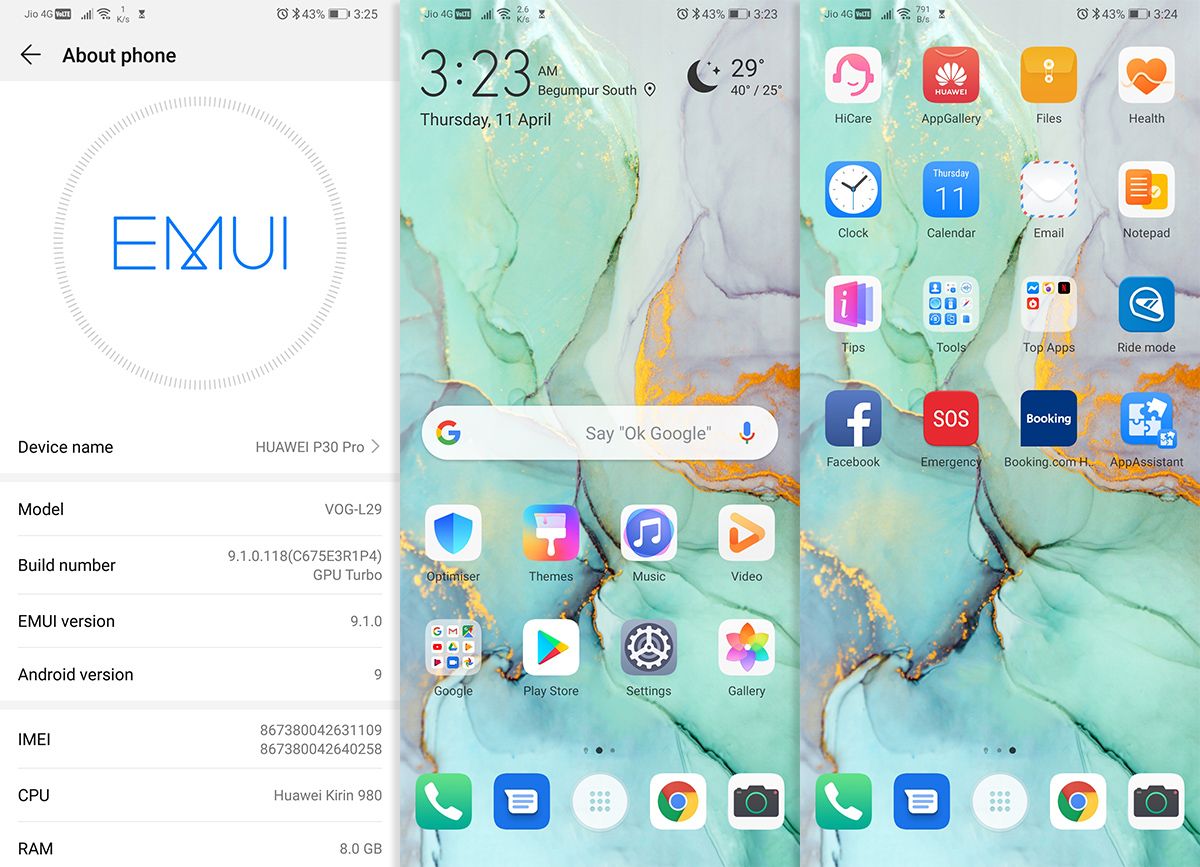For many years, crafting the perfect premium smartphone has not been a tough nut to crack. Adding a hefty price tag to any smartphone earned it the badge of premium, irrespective of its features. But with the changing times, the definition of a flagship smartphone is changing too - and so it the expectation of the users. Users want more value and not just a fancy logo to gloat about if they're buying a flagship. The entry of players like Google, OnePlus, and Huawei has dented this perception has helped sculpt a new dynamic for flagships.
The Huawei P30 Pro, which was launched in Paris last month followed by in India, is a spectacle of this shift. Blessed with the goodness of 5X optical zoom, ultra-wide, and Super Macro shots, striking low-light photography, the new P30 Pro definitely makes for an irresistible camera phone. It also bears other essential attributes of a flagship including a gorgeous design, excellent performance, super-fast charging including reverse wireless charging support, and overall gripping multimedia experience. But, do all these attributes certify the Huawei P30 Pro to be a perfect flagship?
No doubt, the P30 Pro leaves a mark as a great device and raises the bar of smartphone photography, especially at night, and it looks like the Pixel 3 might finally have some strong competition. I have been using the Huawei P30 Pro for the last five days and here's what I think about its flagship status.
Huawei P30 Pro: Design
The Huawei P30 Pro extends the rounded edge design of the last year's Huawei Mate 20 series with a slightly sleeker persona. Even though the glass sandwiching is not something new, the P30 Pro's design feels refreshing. This vibe can be ascribed to the slim profile as well as the rounded edges on both sides which adds a sense of continuity. Even though there is a metal frame separating the two glass surfaces, the seamless binding makes it blend very easily. On the top and the bottom, however, Huawei has consciously chosen sharp contouring and flattened surfaces. This, says Huawei, has been inspired by the design of a diamond.
Moving on, the rear of the Huawei P30 Pro comes with dazzling gradients and color which is supposedly inspired by nature. In India, Huawei intends to sell only the Breathing Crystal and the Aurora variants, skipping the Black, Amber Sunrise, and the Pearl White. I have been using the Aurora variant, which gives off a gradient between blue and purple using spectacular shifting patterns that resemble the phenomenon of aurora borealis a.k.a. the northern lights. Huawei says that the back of the P30 Pro is a product of nine layers of glass stacked, but does not talk much about its durability.
The Huawei P30 Pro's back also features a bump to house the multi-camera setup besides the logos for Huawei and Leica. The bump is venial considering the fact that the P30 Pro actually packs in a periscopic setup to deliver its salient 5X optical zoom capabilities. The LED flash and the Time of Flight (ToF) camera have been flushed under the glass, which adds to the sense of luxury. There's no physical fingerprint scanner on the since Huawei has opted for an in-display sensor.
Moving on to the front of the smartphone, the 6.47-inch OLED display comes as the chief attraction. It is surrounded by minimal bezels and features an "ultra-small" dewdrop notch. To secure bragging rights for the small notch, Huawei has had to purge the 3D face-mapping tech on the Mate 20 Pro. Full HD+ in resolution, this display comes off as vibrant and attractive and gets dandier with HDR10. The OLED panel also supports the Always On feature but doesn't show any system or third-party notifications. That is, however, likely to be fixed soon with the EMUI 9.1.0.124 update which is already rolling out to the P30 Pro in certain regions.
As mentioned above, the display also sports an in-display fingerprint scanner which is claimed to be 30% faster. However, during my limited usage, the fingerprint scanner did not seem incredibly fast and I would still desire for a physical scanner instead. So far, my experience hasn't matched Huawei's claims about unlocking the phone with a tap and the process usually compels me to keep my finger rested on the sensor for over a second.
On the top, the Huawei P30 Pro features an infrared blaster which can be used to remotely control a host of devices. On the bottom, there are the USB-C port, the speaker grille, the primary microphone, and the SIM tray, which supports dual SIM cards but without any support for microSD cards. While the left side is completely plain, the right side offers room for the volume rocker and the power button. Meanwhile, the P30 Pro lacks any other programmable button for any smart assistant.
Overall, the design feels pretty neat, modern, and premium in most senses. The only peeve I have with the P30 Pro in terms of its design is its heft. The device weighs at 193 grams, which is slightly bulky and makes you feel that that the phone might nosedive out of your hand. If that's not your concern, then the P30 Pro's design can be fulfilling for most users.
Huawei P30 Pro: Cameras
Taking forward its pedigree of impressive photography capabilities, the Huawei P30 Pro ups the ante against some of the best smartphone cameras in its rivalry. Even though it is not the first smartphone decked with four cameras, it is surely the one which takes things to an impressive level. The Huawei P30 Pro makes its mark by being the first commercially available smartphone to feature a periscopic setup to facilitate 5X telephoto capabilities and up to 50X effective zoom - all this without sacrificing its thin profile. In the SuperZoom mode, Huawei also employs OIS to make sure that slight movements of your hand do not blur or shake the image.
Besides the SuperZoom setup, the Huawei P30 Pro is equipped with a 40MP RYYB "SuperSpectrum" sensor with a large f/1.6 aperture. The wide aperture along with higher sensitivity for yellow light allows for significantly more light to fall on the sensor, allowing greater details even in low light conditions. Huawei says that the camera can capture more light than your eyes, even while using the smartphone in the auto mode. It also features a much wider ISO range (50-409600) than seen on most smartphones and even some entry-level DSLR cameras.
Then, there's a 20MP ultra-wide sensor with a 107° field of view which lets you capture a vast and euphoric field of view without resulting in any observable fish-eye effect. This can be vital if you're clicking a big group of friends or trying the capture the artistic details of a magnificent monument. This sensor also provides for "Super Macro" shots from as near as 25 mm, letting you click the minutest details in objects like a flower, a grain, a rock, an insect - or whatever commands your imagination but evades your eyes.
Additionally, there is a time of flight (ToF) sensor which is touted to work in tandem with the onboard NPU to produce surreal portraits and well-defined bokeh shots. The sensor will also come in handy for AR applications like contact-less measurements and will refine the results in case of ARCore apps and games. Besides that, the ToF camera will also let you play motion-controlled games, just like an Xbox Kinect sensor.
The dewdrop notch on the front houses a 32MP selfie camera which supports auto HDR and a host of beautification features. However, compared to earlier Huawei and Honor phones, the skin tones in the selfies turn out to be pretty realistic rather than washed out as they did before.
While it will be unfair to condense P30 Pro's camera performance into solid opinions about the Huawei P30 Pro's cameras, I have formed some (limber) opinions about its performance. For the ease of understanding, I would emphasize on the principal features which Huawei promises to ace with this smartphone and will be leaving the other - although equally important - parts for the full camera review. All of these images have been unedited and untouched from what was clicked using the smartphone.
SuperZoom
My first instinct with the camera on the P30 Pro was to lurch forward and give the SuperZoom capabilities more than a single shot. The results, as you can see below, are pretty alluring - especially when we look at daylight samples. While moving to 5X magnification, there is a seamless shift from the primary sensor to the zoom lens but this may result in a slight change in colors due to the different apertures of the two lenses.
With the change in aperture and the focal length, there is a due change in the depth of field, and this effect is especially pronounced when the object in focus (like the chipmunk in the picture below) is not too far.
The variation in saturation and the amount of light is more evident in this image below, due to the awning of smog in the Indian capital city. Despite that, the inscriptions on the Qutub Minar, which stands tall since the 12th century AD, are very much evident - even though affected by poor visibility. Considering that this image was captured from several hundred feet away, this is still awe-inspiring.
With the variation of exposure in different parts of the canvas, we can see some changes in the white balance of the images below since I used the auto mode primarily. Even though here we see the opposite effect, resulting in an increase of the exposure when moving from the primary to the zoom lens, this can be attributed to the amount of light in each of the images.
The results of Huawei P30 Pro's incredible zooming capabilities can be seen across even in the dusk, with crisp silhouettes forming across relatively lighter backgrounds. In the images below, the smartphone manages to capture the mesmerizing sky and inciting the feeling of a painting. With the hybrid zoom, however, you risk slight diffraction or bleeding in images when dealing with high contrast or a light source on a relatively dark background, even though the results are still somewhat stunning.
At night, the task gets trickier when you try and tinker with the zoom. Until the point when the primary sensor is in use, there is a decent amount of lighting but switching on to the zoom lens of much lower resolution and a smaller aperture will not produce the same effect as it does in a modest amount of natural light.
Taking our tests a step further, Huawei's claims about the 50X digital zoom are worthy of evaluation. Since the image zoomed in at 50X digitally is simply cropped out of the one taken at 10X hybrid zoom, there is a noticeable decline in the number of details. Depending on it for a crisp shot will be folly but you can still try to use it if you mean only to have some fun.
Even when there's an ample degree of light, achieving a crisp output is something difficult, especially when there are a lot of elements in the image. On top of that, keeping the viewfinder steady with the 50X magnification can sometimes be a nightmare.
However, in scenarios like the one manifested below, it is easy to get a decently sharp image when there's a major contrast between the object and the background - like between the evening sky and the crescent moon.
Ultra-wide
The images clicked in the ultra-wide mode are relatively cooler and have slightly better exposure, in spite of the smaller aperture of f/2.2. Reading the EXIF data for these images reveals that they are exposed for a longer time compared to standard shots and while I haven't yet figured out the reason behind it yet, my instinct says that this could be because of a wider sky in the images below.
Beside appearing slightly less saturated - or marginally washed out, the images clicked with the ultra-wide sensor appear to be slightly less detailed. However, in no condition do these appear to be lacking any crucial details. In fact, if you're not a fan of warmer tones, you'll really appreciate how the ultra-wide shots tone down the saturation that the primary sensor captures.
While making the images look more photogenic, the longer exposure in ultra-wide shots can distort the natural colors of certain images. However, the choice between the two results is totally up to you.
Super Macro Mode
The ultra-wide sensor is also capable of clicking some impressive macro shots, allowing you to bring the smartphone's camera as close as 25 mm from the object in focus. I have had a decent time trying to explore nature from closer than what my eyes could see and the results have not been less than amazing.
Since the Super Macro mode uses the ultra-wide sensor, we can expect similar washing out of natural colors but that can be fixed easily by simple editing tools like Lightroom or Snapseed on the smartphone itself. The Super Macro mode also allows up to 3X optical zoom which can be used to peer from really close.
Night Mode
Another attractive camera feature that sets the Huawei P30 Pro apart from the competition is its Night mode, which finally feels good enough to topple the Night Sight feature in the Pixel 3 XL/3. When the Night mode is triggered, the Huawei P30 Pro analyzes different parts of the frame and automatically adjusts the shutter speed to ensure that the objects are well-lit. Sure, the wide aperture of the primary lens is something that benefits the results significantly, but the Night mode also improves images captured with the telephoto and the ultra-wide lenses.
Besides adding a striking amount of exposure, the night mode adds an HDR effect, thereby improving the contrast of the images clicked at night. However, there's one caveat with the Night Mode which is that you must ensure that your hand is stable all the time since the long-exposure shots have a high possibility of getting blurred even with the slightest of movements. Thus, it is advised that you either rest the P30 Pro on a surface while taking images in Night mode or make use of a tripod stand.
Just like Google's Night Sight, the Night mode on the Huawei P30 Pro can also be used during the day if you want to add an HDR-ish effect to the images.
Apart from these modes, Huawei P30 Pro has a myriad of other camera features waiting to be explored and we'll be covering them all in our extensive camera review. Meanwhile, these images should give you a fair idea about the capabilities of the P30 Pro in nearly all scenarios. Next up, we talk about some of the UI features introduced with the P30 Pro.
Huawei P30 Pro: Unique features in EMUI 9.1
Like other Huawei smartphones, the P30 Pro runs EMUI. However, this is the first smartphone from the company to rock the latest version of EMUI i.e. EMUI 9.1 (based on Android Pie) and this brings a bunch of unique features, which are not yet available on the older models. First of all, Huawei says that it has reworked and simplified the app icons in order to make them intuitive and easy to spot even when the users are not reading the name. Further, the company has now consciously increased the gap between the icons to declutter the interface and introduced some new wallpapers and themes which align with the P30 Pro's colors.
Secondly, Huawei P30 Pro is getting decent support for AR apps from the company and some of these apps include AR Measure, which lets you measure objects from a distance, as well as 3D Live Maker which can make a digital copy of any physical object by scanning it with the Time of Flight (ToF) sensor. Currently, neither of these apps are available to download from Huawei's AppGallery.
EMUI 9.1 also updates Huawei's Always-On display to allow notifications from the system as well as third-party apps. This update is yet to roll out to the Indian unit but Product Managers in the country have confirmed that it will be out soon.
Lastly, Huawei says that a future update will allow owners of certain Audi cars to unlock their cars' doors using the P30 Pro in place of a smart key. This feature is yet to be available and will be rolled out for 10 Audi cars in over 20 countries. Given the confidence of the Huawei team in India, we can hope it to be available in India as well.
Huawei P30 Pro: Great features to complement outstanding cameras
The cameras on the Huawei P30 Pro are not ordinary in any sense. In fact, my initial impressions compel me that these quad-cameras are extraordinary. But besides the camera, the P30 Pro also packs in the latest and the most powerful processor from the company, 8GB of RAM, a striking display, and an enormous 256GB storage. These features totally justify the premium pricing which is in the ballpark of the prices of Samsung Galaxy S10 and the Pixel 3 XL. While I feel convinced that the P30 Pro has a lot of features aside from its gorgeous appearance to justify this pricing, I intend to evaluate it further in a detailed camera review. Meanwhile, if you have any queries about the Huawei P30 Pro, reach out using the comments down below.
Note: Huawei has stopped providing official bootloader unlock codes for its devices. Therefore, the bootloaders of their devices cannot be unlocked, which means that users cannot root or install custom ROMs.

